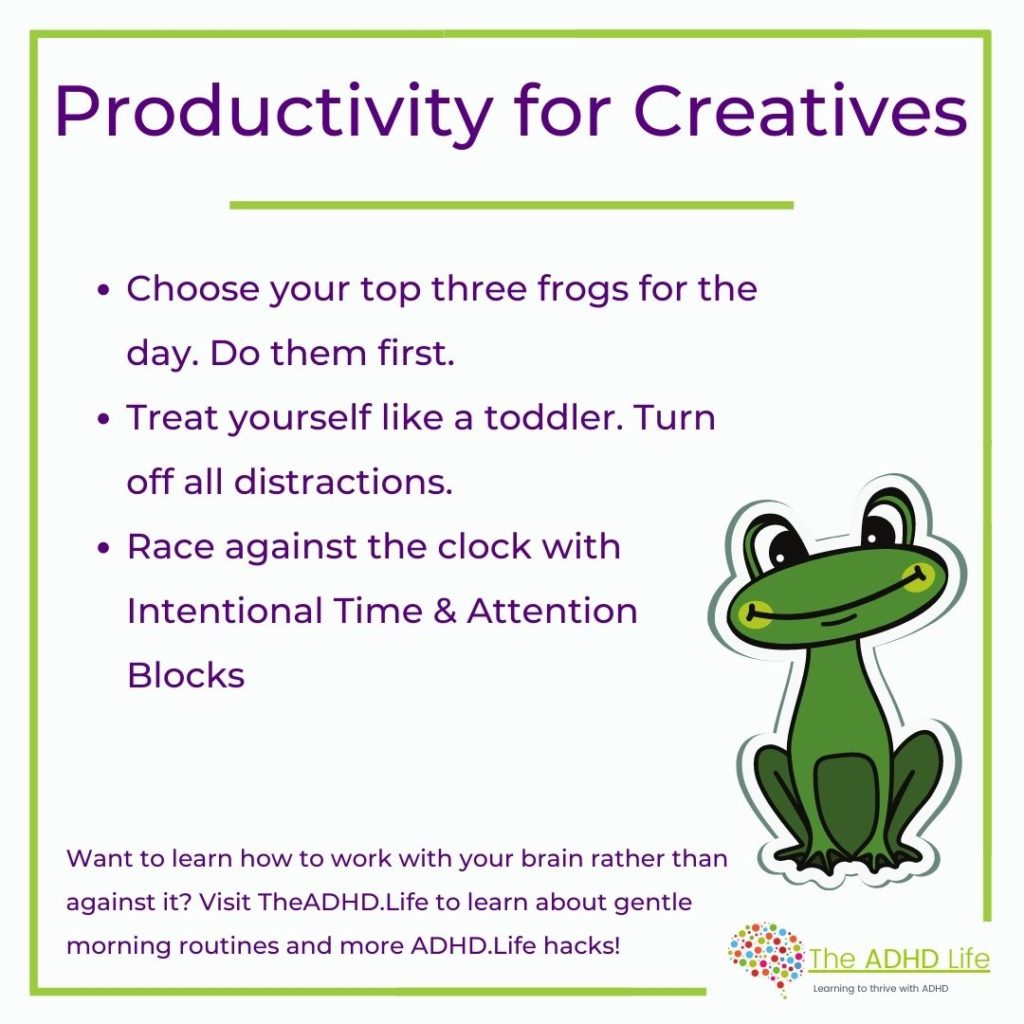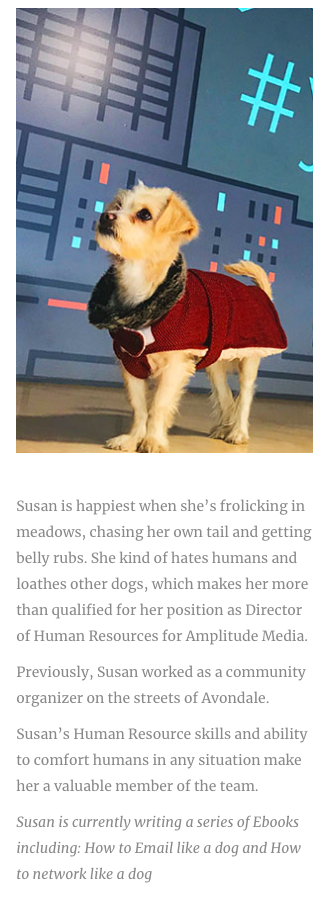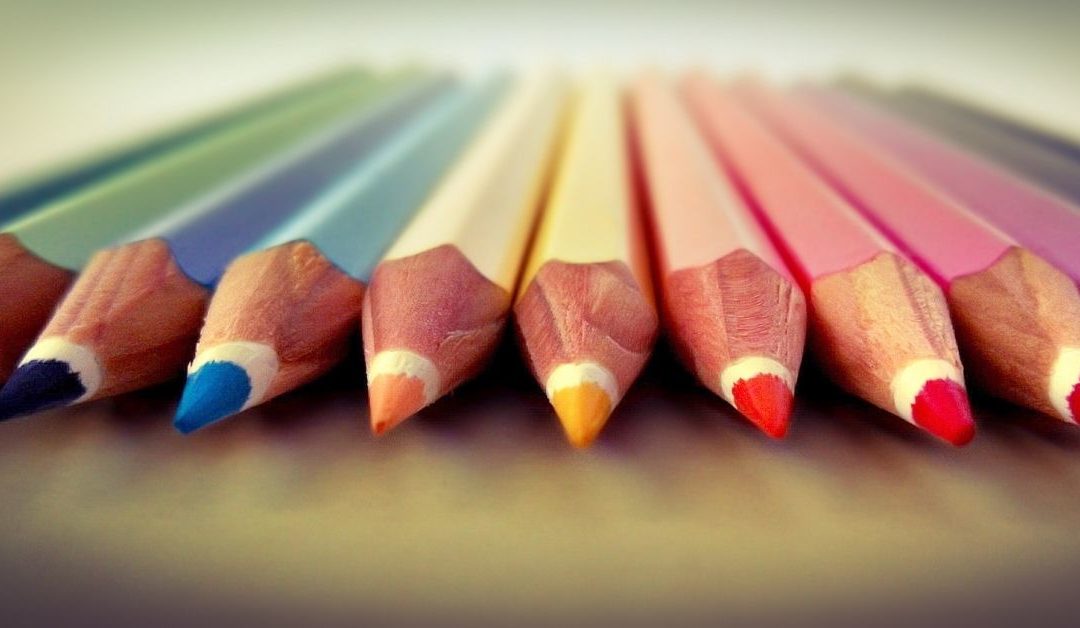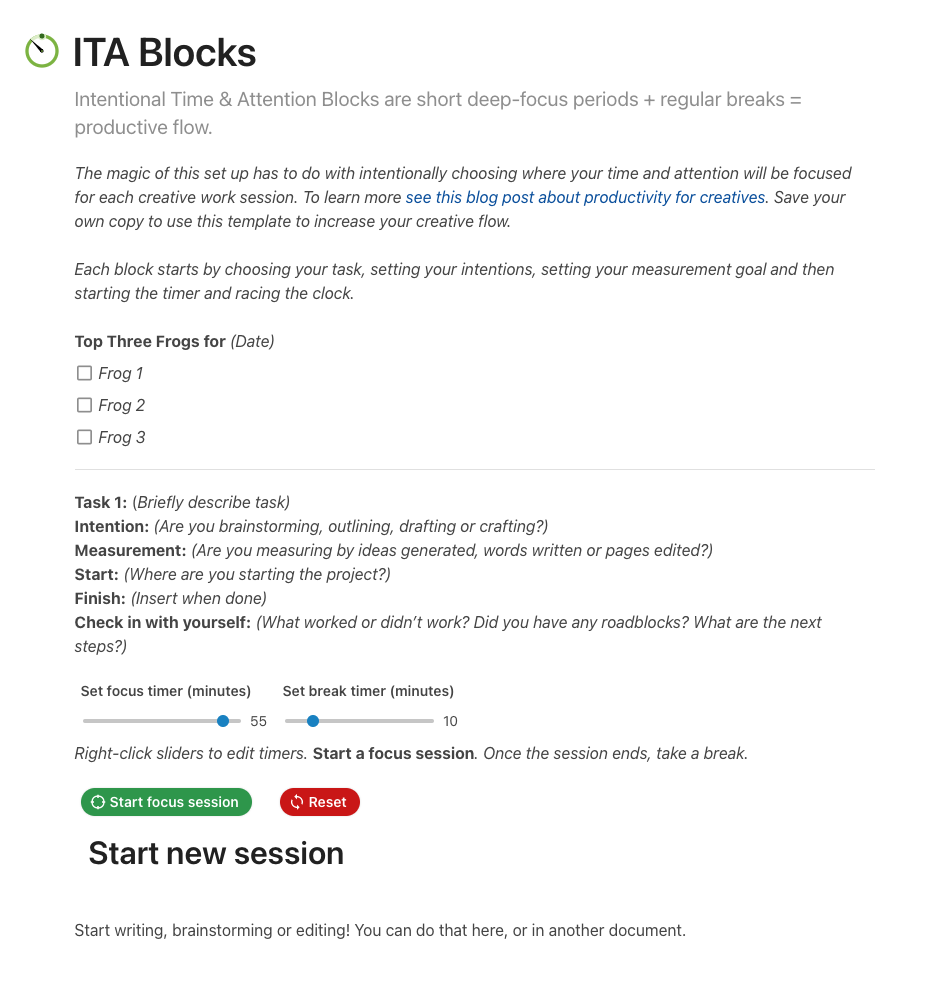Many people with ADHD are very creative, have great ideas, big vision and… itty bitty follow through. It’s so frustrating part of being a creative human with ADHD because you know how much awesomeness is in your brain… if you could only get it out reliably! Instead it often feels like flashes of brilliance and a perfect storm of events are required for the magic to happen.
What is Executive Function?
Executive function refers to a set of skills that help your brain decide how to run your life. It includes adaptable thinking, planning, self-monitoring, self-control, working memory (remembering what you’re doing at any given moment), time management and organization.
Instead of being able to make a plan for what needs to be done and when and then following the steps to put that plan into action, the ADHD brain is seeking dopamine from new and exciting ideas, activities.
One of the ways ADHD brains differ from neurotypical brains is decreased executive function. It’s easier to look at what motivates neurotypical brains vs ADHD brains to see how this difference affects us.
The neurotypical brain is motivated by priority and importance of tasks.
The ADHD brain is motivated by: interest, urgency, a challenge, passion and novelty.
I can’t begin to tell you how many last minute all nighters I pulled in school to get projects done once the panic monster (urgency) finally kicked in. I wish I could say I’ve gotten better as I’ve gotten older, but that would be a lie.
It’s usually about now when a neurotypical person says, “we all procrastinate sometimes.” But the inability to get started on a school or work project isn’t the only issue. it’s not just procrastination, which is putting off something you don’t want to do, but ADHD makes it impossible to do things we WANT to do too.
Medication can help with executive function, but, as I’ve shared before, medication simply unlocks the tool box, so you can access your other tools. My executive function tools essentially are broken down into three main categories to motivate my brain by either reducing distractions, creating a false sense of urgency or setting up a challenge.
- Set yourself up for success by choosing a limited number tasks. One-three items that can be accomplished in a 55-minute period.
- Limit distractions so you can’t get to your most common interesting items.
- Create urgency and a challenge with a false sense of urgency.

Choose your top three- Prioritize and eat the frog first
Mark Twain told a story about doing the most difficult task of the day first thing in the morning. He related it needing to eat a frog saying, If you had to eat a frog a day, and you hated frogs, you could either eat the frog first thing in the morning, or you could spend all day fretting about eating the frog.
Knowing you needed to eat a frog would overshadow everything else you did that day and weigh you down. The frog would grow larger and larger and feel impossible to tackle. By the end of the day you’d be exhausted by the task and it would feel impossible. It would also likely not get done.
But if you ate the frog first thing in the morning then you would have the unpleasant task out of the wa,y and feel accomplished, no matter what else you did or didn’t get done for the day.
What if every task is a frog?
ADHD makes almost any “productive” task feel like a giant frog that needs to be eaten. But then, because of our struggle with prioritizing, everything is also equally urgent. I also have a tendency to overestimate how much I can get done in a day. I think part of this comes from feeling constantly behind from not functioning at my highest capacity. I’ll sit down to make a list of things I need to do and before I know it I’ve got a 15 page to do list that covers *all the things* and am totally overwhelmed from even thinking about it that I need a nap.
When there are so many tasks that need to be done executive function goes haywire. It’s also easy to get lost in your email inbox or slack messages or wherever you spend time to not do the big tasks, but recognizing the difference between being busy and being productive is half the battle.
Choose productivity. Trick your brain into choosing it as well. I’ve used a million different project management softwares and communication tools and all things digital, but they just feel busy. To feel productive I like to write in a notebook. Make little squares to cross off when I finish a project There are studies that show the act of writing things down solidifies things in our brain in a different way than entering them via keyboard.
I like to keep a productivity notebook and each day write the date at the top of a page along with my top three tasks to complete that day. Those are the only three things I need to get done that day for the day to be complete and successful. It gives me a stopping point.
But typically once I’ve completed those three things I’m jamming and can keep going on other tasks. The doing of the things (and crossing them off in my handy-dandy notebook) is a dopamine reward that makes my executive function kick into gear.
Treat yourself like a toddler- Turn off the distractions
My oldest daughter came to me when she was 19 and trying to figure out adulting and said, “I’ve realized adulting is basically just being your own mom. Instead of your mom making you go to bed on time, eat regular meals- including vegetables and turn off the tv and go outside, you have to do it yourself. Being a grown up is just being the mom to your inner toddler.”
LIkewise, working for yourself (which many people with ADHD do) is literally being your own boss. There is no one to check and see if you’re working or if you’re watching all the seasons of New Girl… again. It’s easy to get distracted by “taking a quick break” and not coming back to the tasks at hand- because we’re all toddlers at heart.
Being an adult means you need to do chores, pay bills and stop scrolling on your phone and go to bed at some point too.
It’s common to think that you should be able to, “just do the things’” but in reality that expectation is working against your ADHD brain. Accept that you need to be the grown up for yourself… by treating yourself like the toddler you are and ground yourself from distractions by making them inaccessible.
My biggest distractions are all the “real quick” checks: social media, email, slack, text messages, phone calls and humans interrupting me from my flow. Part of it is my ADHD, but there is a real focus problem when we constantly switch between tasks- even for neurotypical humans.
It may feel like we’re getting things done, but you’re not. Multi-tasking is a lie we all like to tell ourselves. We all need some time to be doing significant deep work daily.
I “toddler” myself in several ways:
- Turn off the phone: My phone is my biggest distraction of “just checking.” Even if I tell myself not to look at it, turn it to silent and turn it over on my desk I will STILL pick it up the moment my fingers don’t know what to type next. I’ve started plugging it in across the room. Some days I resort to turning it off until my top three tasks are complete.
- Make distracting sites inaccessible: When you work on the computer there are endless distractions available. There is always something new to read, a new cat video to watch or someone wrong on the internet. Social media is the devil that I love the most. I have to block myself from sites that are my favorite time-wasters. The ones that I open and don’t emerge from for hours. Many times if I’m writing and don’t need internet access I will even turn off my wifi.

Employee of the month, every month
For when I need to have wifi for a project I’m working on, I use a tool ironically called Self-Control Timer. You can download it and use it on Mac and Window machines. You add the sites that distract you most to the blacklist and then choose a time period for those sites to be blocked behind a firewall. I typically turn my time on for the first half of my day and it makes me a million times faster and more productive.
- Take care of all physical needs first: This is a very toddler move. But I eat, get water or coffee, use the bathroom and make sure the temperature in the room is right before I sit down to work.I also make sure Susan (my HR director/dog, check out her headshot and bio) has been outside, has food and water and we’ve had a little playtime- because I will drop everything to tend to her needs. Yes. She is the boss.I also have a couple of playlists I use when I’m doing deep work. They vary depending on the task, but I make sure they’re playing and on repeat so I don’t need to worry about fiddling with the right music to help tune out distractions.
- Choose your location wisely: Choose where you’re going to work. Set up your workstation and prepare to sit there for several tasks in a row. The chair should be comfy, you should have everything you need to deeply focus on your top three tasks and your computer should be plugged in or adequately charged.
Sometimes this location is my desk in my room. Sometimes it’s the kitchen table and sometimes it’s a corner table at my favorite coffee shop. It depends on my mood and my task list. Some people find great success in having a “work mode” location. I do better when I move around day-to-day, but I typically pick one location per half day at most. - Train your humans: Humans are my greatest distractions, specifically the ones I’ve spawned myself. My best deep work is done when they aren’t home and I have my house to myself, but the nature of single-mom/business owner life is that they are frequently here when I’m trying to get stuff done. I have a sign on my door that says, “do not interrupt” and when my door is shut they are not to come in unless the house is on fire or someone is dying. Even then, it’s questionable if they should interrupt me or not.
Humans in the wild are generally less well-trained, but the headphone trick typically works well in most public locations. Although I have been interrupted by wild humans because I do look relatively approachable. I’m working on my “do not approach” face, but may resort to a sign on my computer at some point. - Only have one window/tab open: This is a hard one for me. But if you can, only have the screen open you are currently working in. If possible, maximize it to eliminate any visual distractions. This may apply to writers more than any other profession- but I like to do my writing in Microsoft Word so I can use Focus mode, which you can find as an option in the View menu.When my project isn’t writing I try to keep the “only have one screen open” mentality by hyper-focusing on one specific task at a time. If I’m building a website I stay on one page or one part of the page.
- Keep a notebook nearby: This is key for me because even when I’m hyper-focusing I will have distracting thoughts that come up. Mindfulness meditation has helped with this significantly, but often the quickest way to let the thought go is to jot down a note of it so my brain relaxes about me forgetting that “buying some milk” is more important than a paid client project.
Race against the clock- ITA Blocks
Several years ago I attended a workshop titled, Productivity for Creatives, led by my friend Ita. It was at this workshop that I learned about productivity blocking, but in a different way than time blocking is typically presented.
I’ve incorporated them into my daily work and used them weekly at our Amplitude Co-Lab in the before times when I used to see people in person. I now call them Intentional Time & Attention Blocks, or ITA Blocks. The structure is flexible enough for creatives to get started on a project and sometimes it’s enough to launch me into hyper-focus mode.
Caveat: A major issue many ADHD brains have is the inability to just do part of something. One of the keys for me is setting my intention and my time to just get started. Sometimes hyper-focus and continuing is okay, but sometimes I need to take that break. That’s okay too.
There are several key components that make them super effective for working with my ADHD brain and tricking it into thinking that it’s getting the interest, urgency, challenge, passion and novelty it craves to be motivated.
I start by choosing my three frogs for the day. The first frog is my first block session, the second is my second and so on.
You can create your own block notes in a notebook or you can get the template here.
- Intentional: I set my intention for that session and write it down. As a writer it’s easy to try and brainstorm, outline, draft and edit/craft at the same time. What happens is it disrupts the flow and makes everything take ten times as long. Once you’ve set your intention, decide your measurement for the session. Here are some recommendations.
- Brainstorm: How many bullet point ideas can you come up with? Titles of articles? Names for your product?
- Outline: Do you need to outline a presentation? Sketch out plans for a project?
- Draft: As a writer it’s just writing words on a page as fast as I can without really thinking. The thinking comes later.
- Craft/edit: How many pages of editing can you do in 55 minutes?
- Time: Set a 55 minute timer. Note at what point you’re starting and write it down.
- Attention: Go! See how much you can get done in a 55 minute time period. Do not stop or research or check email or texts.
- Check in: Write down your finishing measurement. When you’re with a group check in at the end of each session. If you’re by yourself you can still check in with yourself. Write down what worked or didn’t work. Did you get stuck anywhere? Have roadblocks? What are your next steps on this project?
Writing down your intention and how you’ll measure success is holding yourself accountable for a specific project and goal with a specified deadline (55 minutes from now). This plays a trick on your brain, adding false urgency and a challenge to beat the timer.
When doing this as a group there is added peer pressure and support. In addition to writing down our intentions we go around the table and speak our intentions out loud and at the end of the block report how we did and mention any roadblocks. The team then brainstorms for a minute about how you might be able to overcome those roadblocks.
The biggest thing for me is that by focusing on my top three frogs in this very specific, very focused way allows me to have a solid three hours of genuine productivity every day. The rest of the day can be kind of a mess if my morning is productive. But very often when I get a good start to the day it continues into the rest of the day.
Other Resources:
Last of all, for more inspiration and ideas, check out some of my favorite productivity books:
- Atomic Habits by James Clear: This is by far my favorite ADHD friendly book on building good habits in small ways. It’s an easy listen on Audible as well.
- Indistractable: This book is a fascinating look at how we’re primed to be distracted all the time. The author provides lots of small ways to be more present and to win (as much as we can) the attention game.
How do you handle creative productivity with ADHD? Tips? Tricks? Recommendations? Join the conversation on Facebook and share your ADHD life hacks and connect with other adults who are trying to hack their ADHD!



